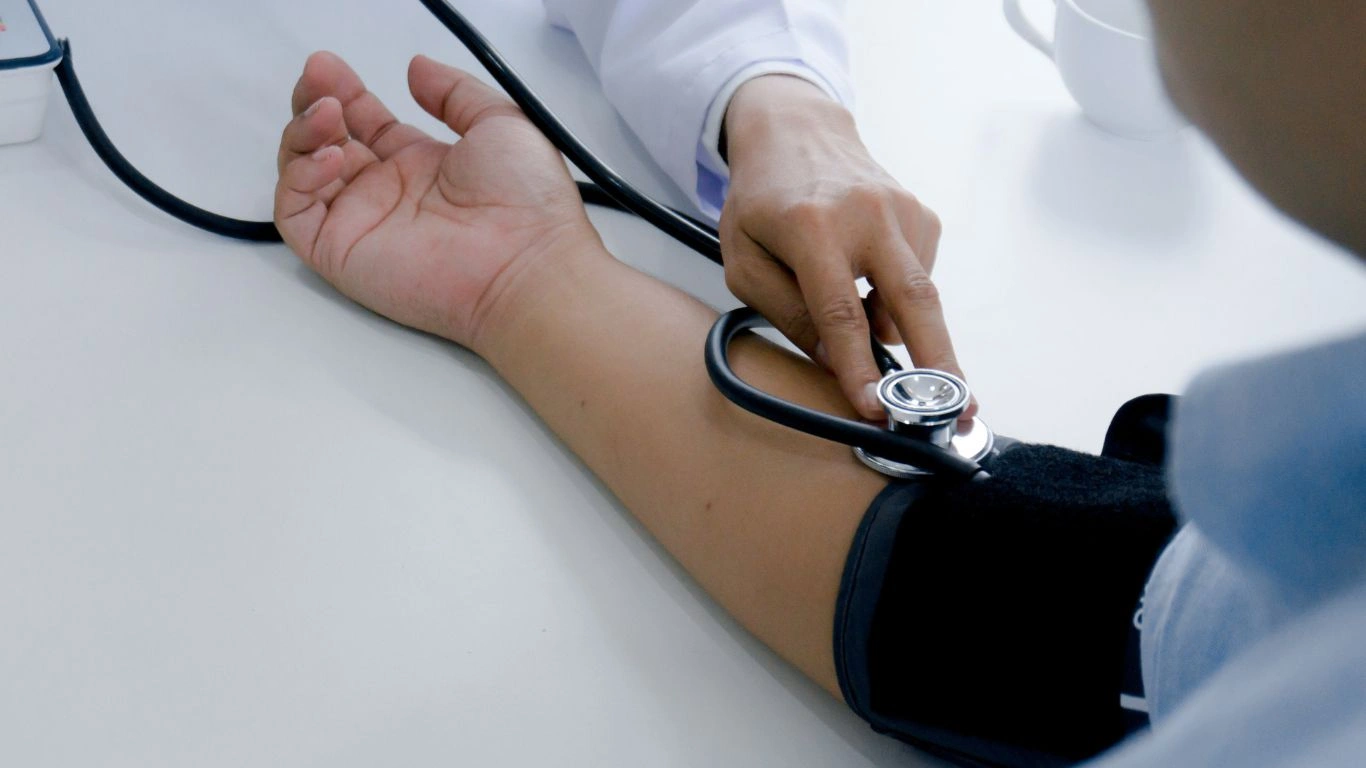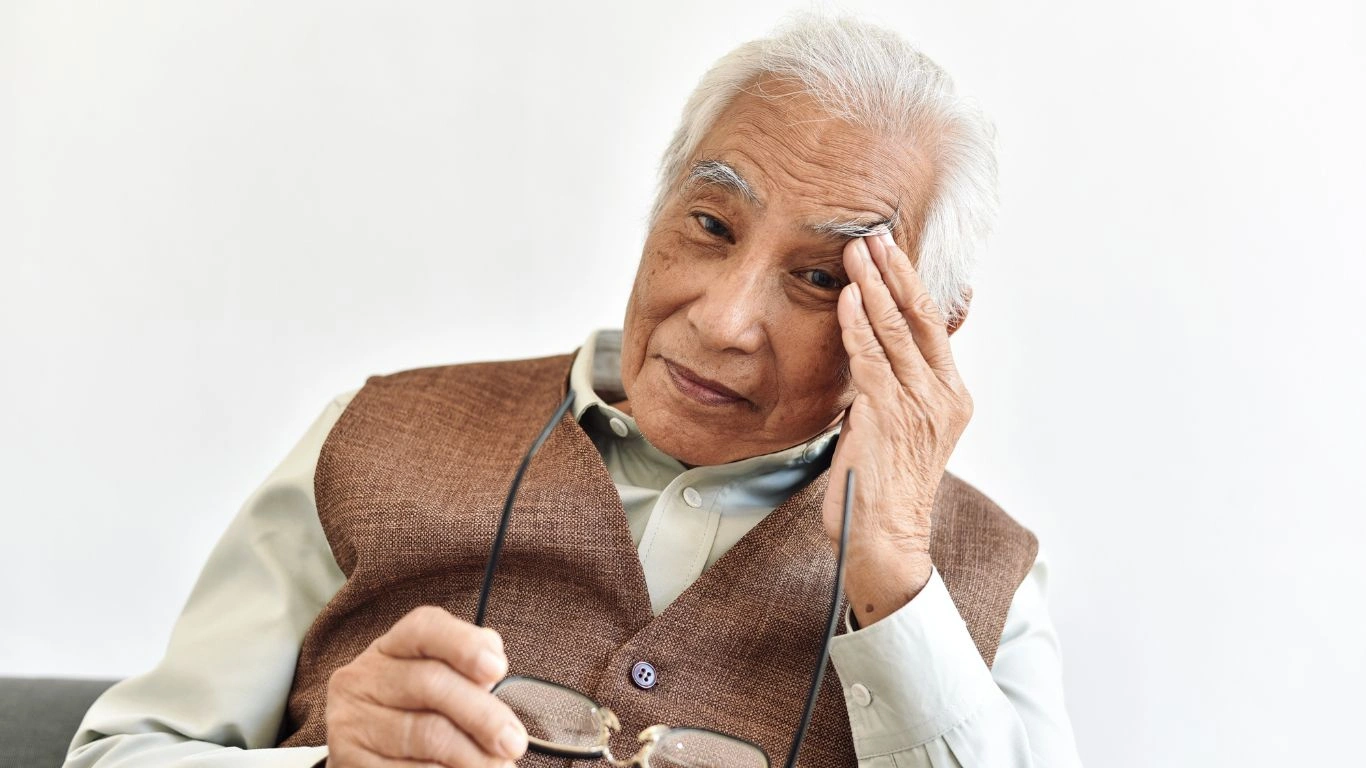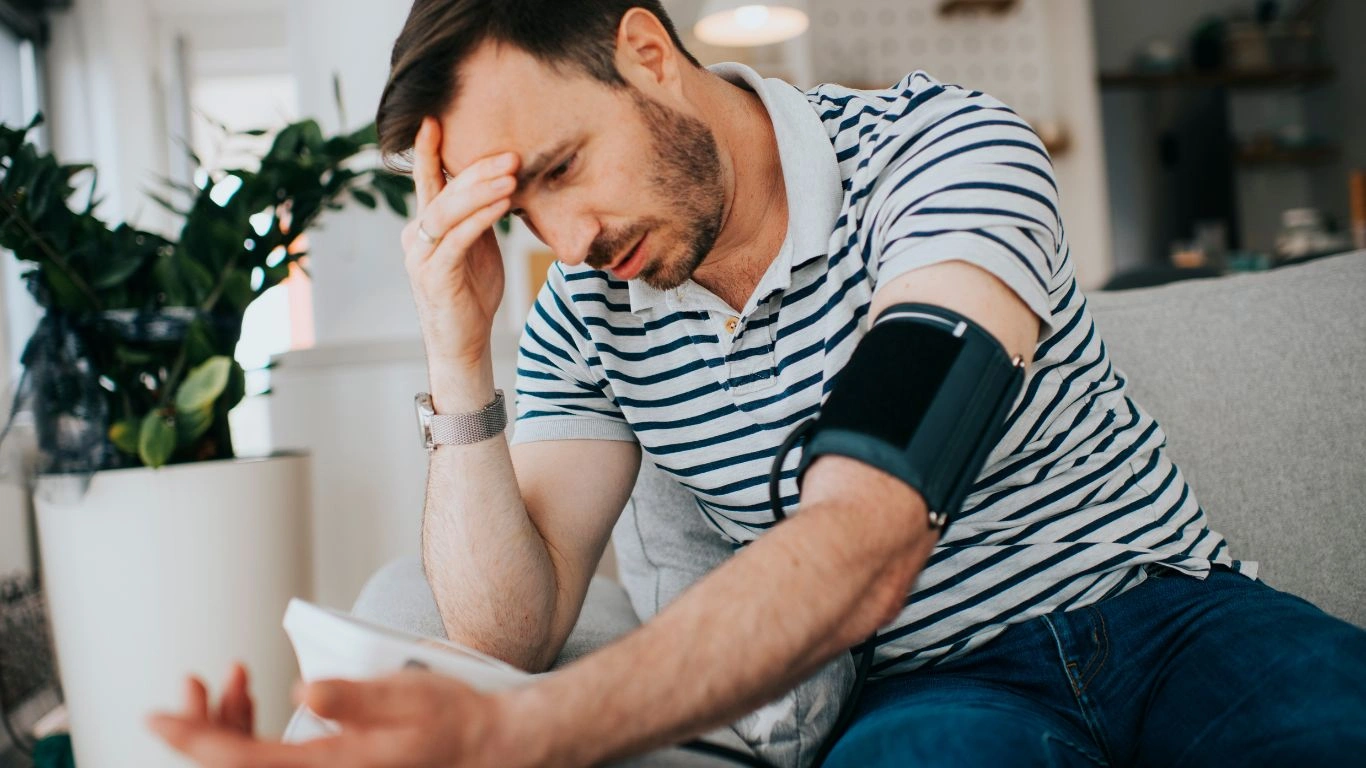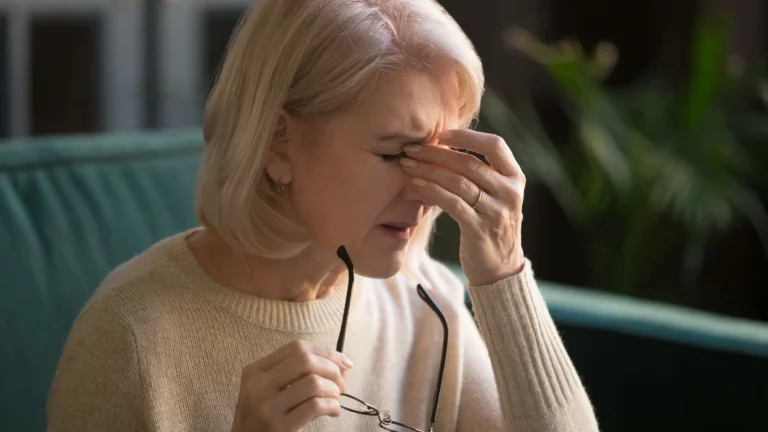How Mindfulness Lowers Blood Pressure & Transforms Your Heart Health
High blood pressure is often called the “silent killer”—and as someone who’s spent years helping patients manage it, I can tell you firsthand that stress plays a massive role. The good news? You don’t have to rely solely on medication. There’s an incredibly powerful, natural tool at your disposal: mindfulness. Yes, you read that right. How mindfulness lowers blood pressure is not just a trending topic; it’s a game-changer for those looking to take control of their health.
Understanding the Stress-Blood Pressure Connection
Before we dive into how mindfulness works its magic, let’s talk about why stress sends blood pressure soaring. When you’re stressed, your body shifts into “fight-or-flight” mode. Your heart rate spikes, blood vessels constrict, and your blood pressure rises—sometimes dangerously high. And if this happens regularly? Well, that’s where the real trouble begins.
I’ve seen patients who have perfect numbers at home, but the second they step into a clinic, their blood pressure skyrockets. It’s called white coat syndrome, and it’s proof that our minds have a huge influence on our blood pressure. But here’s the key takeaway: if stress can raise blood pressure, then relaxation can lower it. And that’s where mindfulness comes in.
 What Is Mindfulness, Really?
What Is Mindfulness, Really?
Mindfulness isn’t just about meditation or sitting in silence for hours. It’s about being fully present, aware, and engaged in the current moment—without judgment. It’s learning to acknowledge thoughts and emotions without letting them control you. And when it comes to blood pressure? This simple shift in mindset can make a massive difference.
The Science Behind Mindfulness and Blood Pressure
Studies show that practicing mindfulness regularly can help:
- Reduce cortisol (the stress hormone) levels
- Lower heart rate and promote cardiovascular relaxation
- Improve emotional resilience, reducing overreactions to stress
- Enhance the parasympathetic nervous system (your “rest and digest” mode)
One study in the American Journal of Hypertension found that participants who engaged in mindfulness-based stress reduction (MBSR) saw a significant drop in their blood pressure levels after just eight weeks. That’s huge! And I’ve witnessed this firsthand with patients who commit to mindfulness techniques.
 Simple Mindfulness Practices for Lower Blood Pressure
Simple Mindfulness Practices for Lower Blood Pressure
You don’t need to be a Zen master to practice mindfulness. Start small with these easy techniques:
1. Mindful Breathing
One of the simplest yet most powerful ways to lower blood pressure is mindful breathing. Here’s how:
- Find a quiet spot and sit comfortably.
- Close your eyes and take a slow, deep breath in through your nose.
- Hold it for a moment, then exhale gently through your mouth.
- Repeat this process, focusing solely on your breath.
Just five minutes of this can work wonders for calming your nervous system. I often recommend this to my patients before their check-ups, and many report a noticeable drop in their blood pressure readings.
2. Body Scan Meditation
This technique helps release tension you might not even realize you’re holding. Try this:
- Lie down or sit in a comfortable position.
- Close your eyes and take a few deep breaths.
- Start at your toes and slowly bring awareness to each part of your body, scanning upward.
- Notice any areas of tightness or discomfort, and consciously relax them.
Many of my patients say this helps them sleep better, which in turn helps regulate their blood pressure.
Stay tuned for more powerful mindfulness techniques and deeper insights into how they can transform your cardiovascular health!
Now that we’ve covered the basics of mindfulness and its incredible impact on blood pressure, let’s take things a step further. If you’ve ever thought, “I don’t have time for mindfulness,” trust me, you’re not alone. I hear this from patients all the time. But here’s the reality: you don’t need an hour of meditation each day to see results. Small, consistent changes can make a massive difference.
 Mindful Eating: A Game Changer for Blood Pressure
Mindful Eating: A Game Changer for Blood Pressure
We often underestimate the connection between eating habits and hypertension. But let me ask you—how often do you rush through meals, scrolling on your phone or watching TV? If you’re like most people, the answer is “pretty often.” And that’s a problem.
What Is Mindful Eating?
Mindful eating is all about slowing down and truly experiencing your food. It’s about tuning in to the flavors, textures, and even your body’s hunger signals. When you eat mindfully, you naturally make healthier choices and reduce stress-related eating, which can have a direct impact on blood pressure.
How to Practice Mindful Eating
Here’s a simple way to get started:
- Slow down: Take smaller bites and chew thoroughly.
- Eliminate distractions: Put your phone down and turn off the TV.
- Engage your senses: Notice the colors, textures, and aromas of your food.
- Listen to your body: Stop eating when you feel satisfied, not stuffed.
I’ve had patients tell me that just by practicing mindful eating, they’ve noticed a drop in their blood pressure. Why? Because when you slow down, your body stays in a more relaxed state, keeping stress levels (and blood pressure) in check.
 The Power of Mindful Movement
The Power of Mindful Movement
If the thought of meditation doesn’t excite you, don’t worry—mindfulness isn’t limited to sitting still. Movement can be a powerful way to practice mindfulness while also improving cardiovascular health.
1. Walking Meditation
Ever taken a walk but been so lost in thought that you barely remember the journey? That’s the opposite of mindful walking. Here’s how to make your walks more intentional:
- Walk at a comfortable pace, preferably in nature.
- Focus on the sensation of your feet hitting the ground.
- Pay attention to your breath—inhale deeply, exhale slowly.
- Notice the sights and sounds around you without judgment.
Even just 10 minutes of this can have a calming effect on your nervous system and lower blood pressure.
2. Yoga for Relaxation
Yoga isn’t just for flexibility—it’s an incredible way to blend movement with mindfulness. Studies show that yoga can help lower stress, reduce inflammation, and improve heart health.
Some of the best yoga poses for lowering blood pressure include:
- Child’s Pose (Balasana): Encourages relaxation and deep breathing.
- Legs Up the Wall (Viparita Karani): Improves circulation and promotes calmness.
- Seated Forward Bend (Paschimottanasana): Helps activate the parasympathetic nervous system.
Even if you’ve never tried yoga before, a few minutes of gentle stretching combined with deep breathing can work wonders.
 Guided Meditation: A Simple Way to Start
Guided Meditation: A Simple Way to Start
Many people are intimidated by meditation because they think they have to “clear their mind.” Let me clear that up right now—you don’t! Meditation is about observing your thoughts without getting caught up in them. One of the easiest ways to get started is through guided meditation.
How to Try a Simple Guided Meditation
If you’re new to meditation, follow these steps:
- Find a quiet place to sit or lie down.
- Put on a guided meditation (you can find plenty on YouTube or apps like Headspace).
- Close your eyes and follow the voice’s instructions.
- Let go of any pressure to “do it right.” Just listen and breathe.
Some of my patients say that five minutes of guided meditation before bed helps them sleep better—and as we know, better sleep means better blood pressure control.
By incorporating even one or two of these mindfulness practices into your daily routine, you can make a real, lasting impact on your blood pressure and overall well-being.
By now, you understand how mindfulness can be a game-changer for blood pressure management. But don’t just take my word for it—let’s look at real-life success stories. Over the years, I’ve seen countless patients transform their health simply by incorporating mindfulness into their daily routine. And the best part? It doesn’t take extreme effort—just consistency.
 Case Studies & Real-Life Examples
Case Studies & Real-Life Examples
Case Study #1: Sarah, the Busy Professional
Sarah, a 42-year-old marketing executive, came to me frustrated. Despite taking medication, her blood pressure readings were still higher than normal. She admitted that her job was stressful, and she barely had time to breathe, let alone meditate. We started small—just five minutes of mindful breathing in the morning and a 10-minute walk during lunch.
Within a month, her blood pressure dropped from 145/90 to 128/82. She told me, “I didn’t believe mindfulness could work, but I feel calmer, I sleep better, and my numbers don’t lie.”
Case Study #2: James, the Retired Veteran
James, a 67-year-old retired veteran, struggled with high blood pressure for years. His doctor recommended mindfulness, but he dismissed it as “not for him.” After much convincing, he started using guided meditation before bed. A few weeks in, he noticed he was sleeping through the night without waking up anxious.
Three months later, his doctor reduced his medication dosage because his readings had significantly improved. Now, he tells everyone, “I wish I had started this years ago.”
 Key Takeaways: What You Need to Remember
Key Takeaways: What You Need to Remember
- Mindfulness reduces stress-related blood pressure spikes. Regular practice helps activate the body’s relaxation response.
- Small changes lead to big results. You don’t need an hour of meditation—five to ten minutes a day can make a difference.
- Mindful eating and movement amplify benefits. Slowing down at meals and incorporating gentle movement like yoga or walking meditation can enhance results.
- Consistency is key. The effects of mindfulness compound over time, leading to long-term heart health improvements.
FAQs
1. How quickly can mindfulness lower blood pressure?
It varies by person, but many people notice a difference within a few weeks of consistent practice. Studies suggest significant reductions in as little as eight weeks.
2. Can mindfulness replace blood pressure medication?
No, mindfulness should be used as a complementary approach, not a replacement. Always consult with your doctor before making changes to your medication regimen.
3. I have a busy schedule. What’s the easiest way to start?
Start with just one-minute deep breathing exercises a few times a day. Even short sessions can help train your body to manage stress more effectively.
Bonus: Additional Resources or DIY Tips
If you’re ready to take the next step, here are some additional resources:
- Apps for Guided Meditation: Try Headspace or Calm for easy-to-follow mindfulness sessions.
- Beginner Yoga Videos: Check out Yoga with Adriene on YouTube for free beginner-friendly practices.
- Books to Deepen Your Practice: Consider “The Miracle of Mindfulness” by Thích Nhất Hạnh or “Wherever You Go, There You Are” by Jon Kabat-Zinn.
Appendix: References, Disclaimer, and Call to Action
References
- American Heart Association
- National Center for Complementary and Integrative Health
- National Library of Medicine
Disclaimer
This article is for informational purposes only and should not replace professional medical advice. Always consult your healthcare provider before making changes to your health routine.
Call to Action
Mindfulness isn’t just a wellness trend—it’s a scientifically backed tool for better heart health. Why not give it a try? Start small, stay consistent, and watch the transformation happen.
If you found this guide helpful, share it with someone who could benefit. And if you’ve had success with mindfulness and blood pressure control, I’d love to hear your story in the comments below!

Dr. Gwenna Aazee is a board-certified Internal Medicine Physician with a special focus on hypertension management, chronic disease prevention, and patient education. With years of experience in both clinical practice and medical writing, she’s passionate about turning evidence-based medicine into accessible, actionable advice. Through her work at Healthusias.com, Dr. Aazee empowers readers to take charge of their health with confidence and clarity. Off the clock, she enjoys deep dives into nutrition research, long walks with her rescue pup, and simplifying medical jargon one article at a time.

 What Is Mindfulness, Really?
What Is Mindfulness, Really? Simple Mindfulness Practices for Lower Blood Pressure
Simple Mindfulness Practices for Lower Blood Pressure Mindful Eating: A Game Changer for Blood Pressure
Mindful Eating: A Game Changer for Blood Pressure The Power of Mindful Movement
The Power of Mindful Movement Guided Meditation: A Simple Way to Start
Guided Meditation: A Simple Way to Start Case Studies & Real-Life Examples
Case Studies & Real-Life Examples




